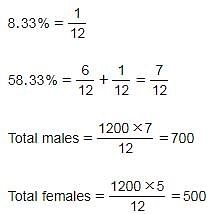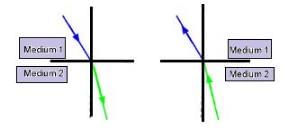DSE Odisha TGT Science PCM Mock Test - 10 - OTET MCQ
30 Questions MCQ Test - DSE Odisha TGT Science PCM Mock Test - 10
Which physiographic division of India is bounded by the Western Ghats, Eastern Ghats, and various mountain ranges?
Which religion constitutes the majority of the population in India?
| 1 Crore+ students have signed up on EduRev. Have you? Download the App |
Explain why Core Sectors are considered the backbone of other industries.
Which of the following is a corrosion resistant metal found abundantly in Odisha?
A pipe can empty a tank in 80 minutes. In how many minutes can the pipe empty 45% of the tank?
The population of a village is 1200. 58.33% of the total population are males. 50% of males and 60% of females of the village are literate. What is the total illiterate population of the village?
In ______ OS, the response time is very critical.
The performance of data communications network depends on ______.
What is the data transfer rate for USB 2.0?
In lower classes, play-way method of teaching is based on:
If you are teaching any subject or topic that is related to social values, you will teach by
In order to avoid gender stereotyping in class, a teacher should:
The concept map is most likely to increase understanding of new concepts by_____.
_____ motives deal with the need to reach satisfying feeling states and to obtain personal goals.
Which of the following is a passive agency of Socialization?
The device or arrangement to detect and check plane polarized light is called
What is the Principle of Reversibility?
A mark on the bottom of the liquid appears to rise by 0.1 m. The depth of the liquid is 1 m. The refractive index of the liquid is
The Brewster’s angle for a transparent medium is 600.The angle of incidence is
If R1 and R2 are the radii of curvature of a double convex lens, which of the following will have the largest power?
The connecting wires of a battery of an automobile carry 200 A of current. Calculate the force per unit length between the wires if they are 50 cm long and 2 cm apart?
The orbital diagram in which the Aufbau principle is violated is
Reaction involving gold have been of particular interest to a chemist. Consider the following reactions.
Au(OH)3 + 4 HCl → HAuCl4 + 3H2O, ΔH = -28 kcal
Au(OH)3 + 4 HBr → HAuBr4 + 3 H2O, ΔH = -36.8 kcal
In an experiment there was an absorption of 0.44 kcal when one mole of HAuBr4 was mixed with 4 moles of HCl. What is the percentage conversion of HAuBr4 into HAuCl4 ?
In the complex Fe(CO)x, the value of x is
If the co – ordinates of a point are (3, – 7), then its ordinate is
What is the additive identity of a vector?
If y + sin y = 5x, then the value of dy/dx is




















